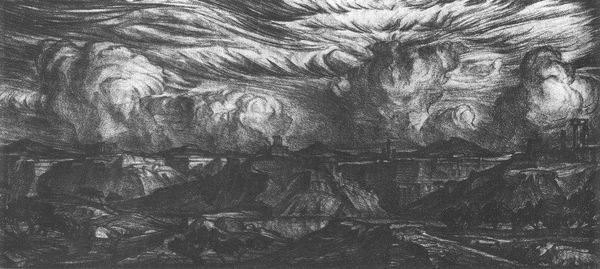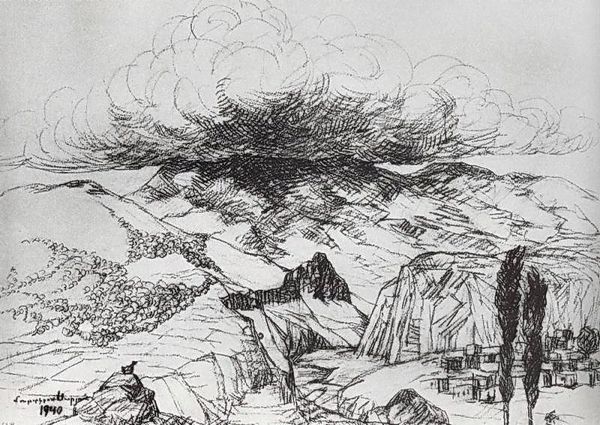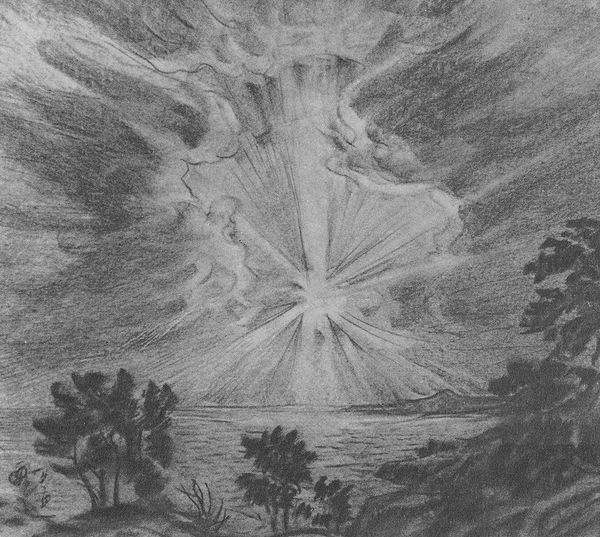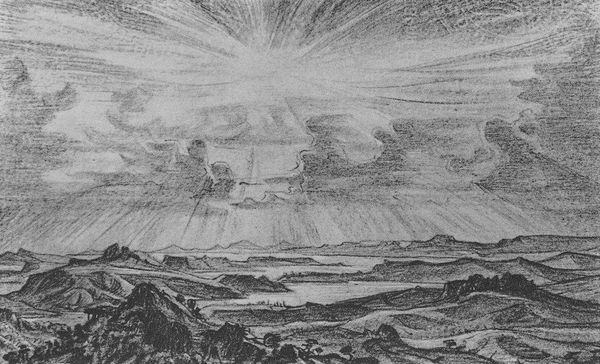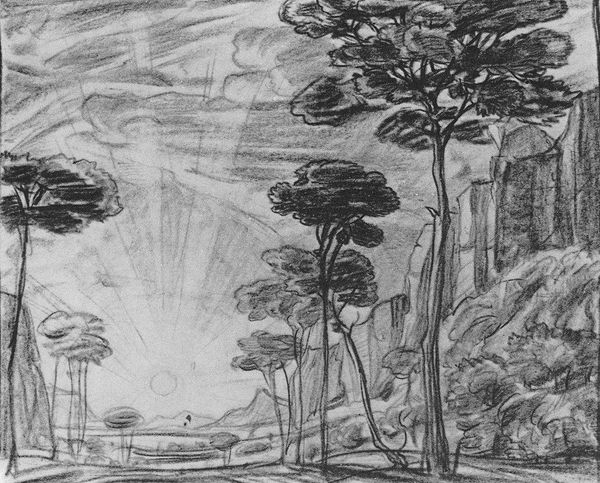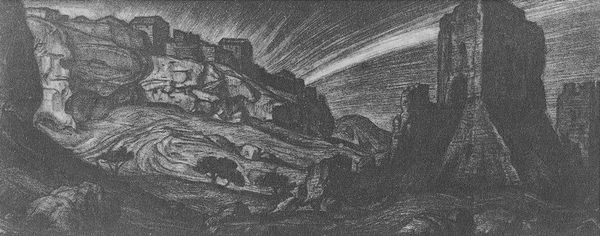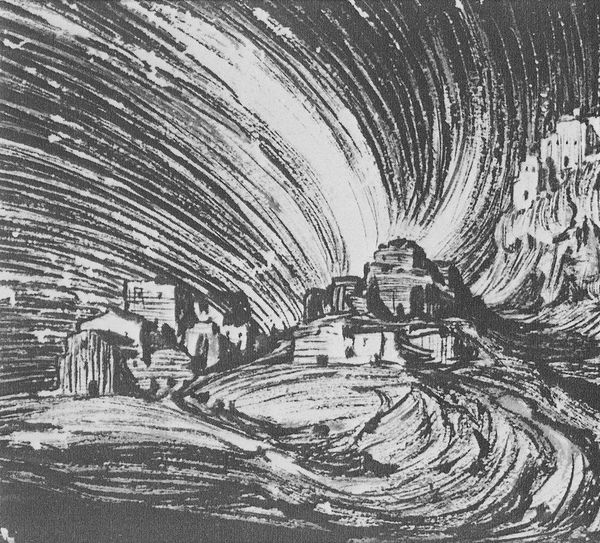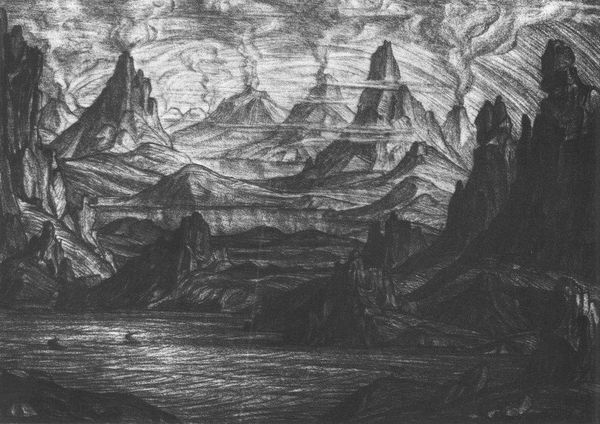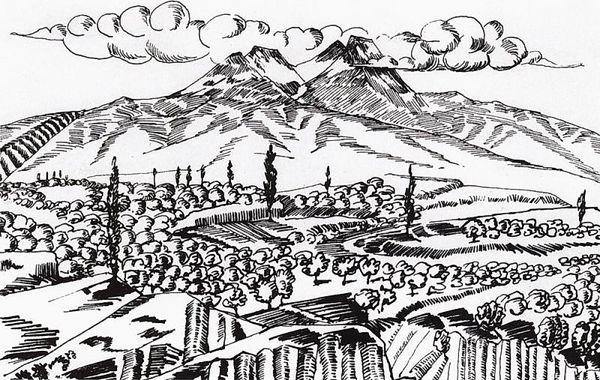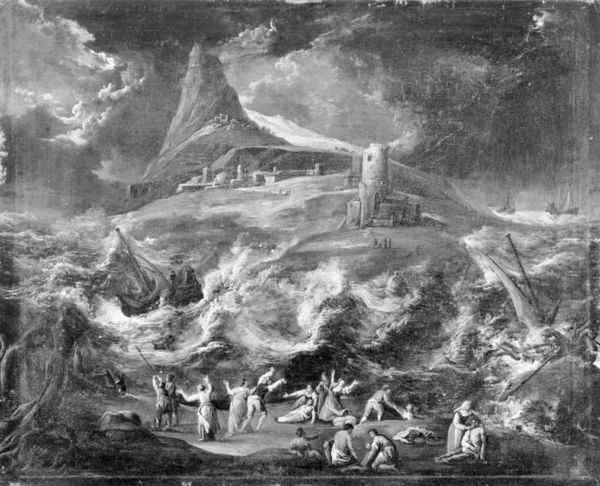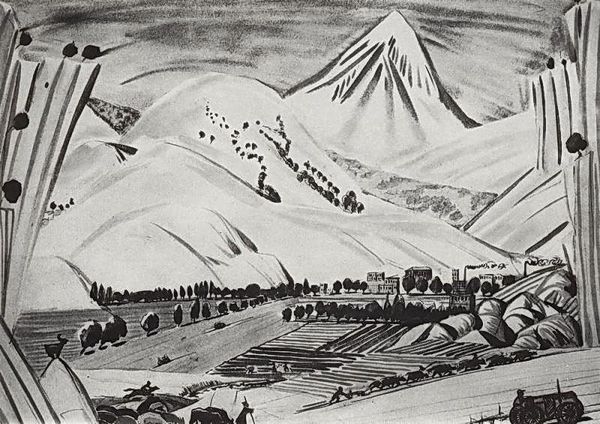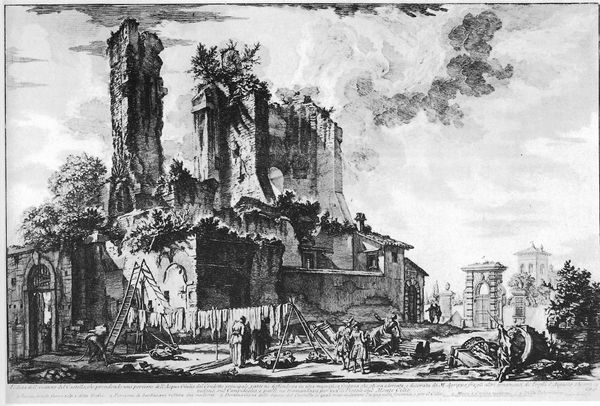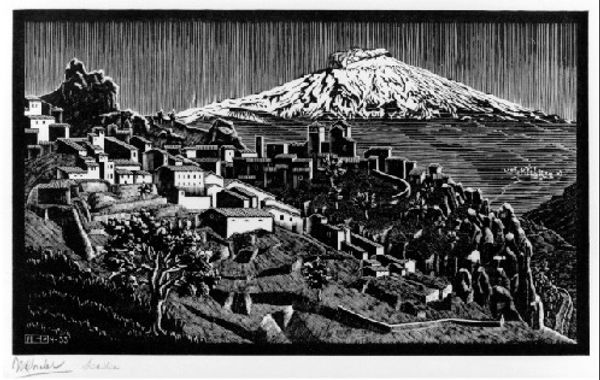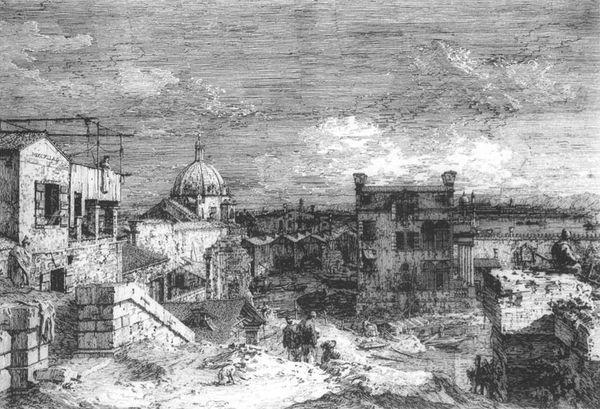
drawing, paper, ink, pencil
#
tree
#
drawing
#
pen sketch
#
pencil sketch
#
landscape
#
paper
#
ink
#
geometric
#
pen-ink sketch
#
mountain
#
pencil
#
expressionism
#
modernism
Copyright: Public domain
Curator: What a stark, almost aggressively linear landscape. The texture practically vibrates. Editor: Indeed. We're looking at "Altars in the Desert" created in 1908 by Konstantin Bogaevsky. Executed in pencil and ink on paper, this work immediately strikes one with its raw, unpolished materiality. Curator: "Raw" is the perfect word. It evokes so much emotion. Look at the mountains; they’re like jagged teeth, thrusting towards a sky that seems to swirl with inner turmoil. It almost seems prophetic, foreshadowing the turbulent sociopolitical context of the coming decades in Russia. Editor: I’m interested in the density of line. Bogaevsky is known for this intensity, using the very process of layering marks, the application of graphite and ink, to create atmosphere and form. We see how a kind of frenetic mark-making constitutes not only shape, but creates a certain sense of... foreboding? Curator: Absolutely. This isn't just a landscape; it's a landscape burdened with meaning. The “altars” of the title imply a place of sacrifice, of some past, or perhaps imminent, act of destruction. Editor: Let's consider the implications of that "altar" label. Bogaevsky seems to be setting up a tension between the natural world and constructed ideology, represented through implied societal practices. I’d suggest a relationship between geological forces and sociopolitical ones—revealed through the tension in their visual language. Curator: The choice of monochrome also simplifies and heightens the impact, emphasizing the somber mood and stark contrasts inherent in the image. There are also art historical and critical implications that this sketch performs a political project that speaks for repressed social structures. It makes me think about colonized landscapes; perhaps the Crimean context. Editor: And to conclude, it also offers us a means to look at materiality: How labor through ink and paper produces the emotional impact we initially registered, in a confluence between internal state and the environment. Curator: Yes, an important reflection to sit with, reminding us that a drawing of landscape such as this functions as a potent lens to view the past and current relationship to the landscape with a renewed appreciation for the processes and historical forces behind art making.
Comments
No comments
Be the first to comment and join the conversation on the ultimate creative platform.
